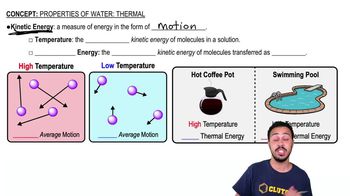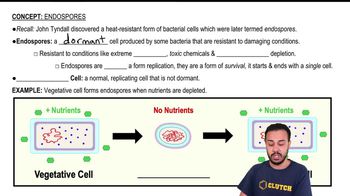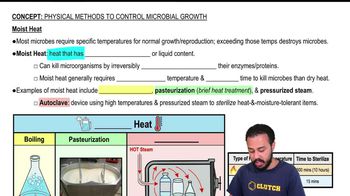Differentiate complex and chemically defined media.
The thermal death time for a suspension of Bacillus subtilis endospores is in dry heat and less than in an autoclave. Which type of heat is more effective? Why?
 Verified step by step guidance
Verified step by step guidance
Verified Solution
Key Concepts
Thermal Death Time

Endospores

Moist Heat vs. Dry Heat Sterilization

Which of the following is true about the optimum growth temperature of most mesophiles?
a) They can grow well at 37^0C.
b) They are more likely to grow at refrigerator temperatures.
c) They can strive well in extremely high temperatures.
d) All of the above.
Which of the following types of media would not be used to culture aerobes?
a. selective media
b. reducing media
c. enrichment media
d. differential media
e. complex media
If pasteurization does not achieve sterilization, why is pasteurization used to treat food?
Thermal death point is not considered an accurate measure of the effectiveness of heat sterilization. List three factors that can alter thermal death point.
The antimicrobial effect of gamma radiation is due to (a) ________. The antimicrobial effect of ultraviolet radiation is due to (b) ________.
